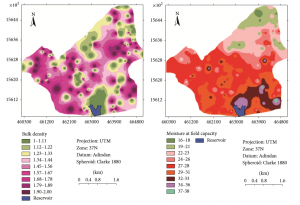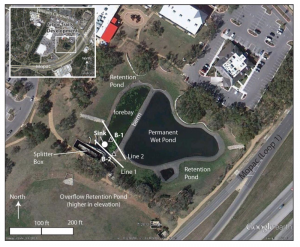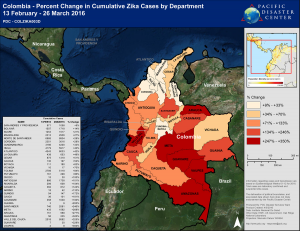“Increasingly evidence suggests that the physiology and behavior of calcifying and noncalcifying organisms can be impacted by increasing OA, with cascading effects on the food chain and protein supply for humans, and alterations to the functioning of ecosystems and feedbacks to our climate.”
With the precipitous increase of carbon dioxide since the Industrial Revolution showing no sign of slowing down (shown in the figure below), the inhabitants of Earth are now facing climate change and its devastating effects. The world’s oceans are the largest “sink” of carbon dioxide; a sink being a recipient. With the absorption of carbon dioxide, the water undergoes a chemical reaction that increases the acidity while decreasing the carbonate concentration, also known as ocean acidification, OA. The change in water chemistry occurs first at the surface, then mixes down into the deeper layers via currents. Carbonate is an ion, or a molecule with an unequal number of negatively charged electrons and positive protons, giving it a net positive or negative charge. The importance of this molecule is that some marine organisms use it to create their shells, such as calcareous (calcium containing) oysters, corals, and coccolithophores (marine phytoplankton – tiny photosynthetic organisms).
 The study by Land et al., published in 2015, attempted to determine if sea surface pH can be determined by satellite analysis in both spatial and temporal terms using parameters from the carbonate system as well as the physical properties of the water. Carbonate system parameters include total alkalinity (how well water can neutralize acid), dissolved inorganic carbon, pH, and fugacity of CO2 (how quickly it changes into another state) are driven by temperature, salinity, and biological activity. Sea surface temperature (SST), sea surface salinity (SSS) and chlorophyll-a, a pigment used by photosynthetic organisms, can be used to estimate carbonate parameters using empirical relationships derived from data in situ, or in its natural state or site. The benefits of using satellite analysis are that measurements are cost-effective, spatially broad, and can be almost continuously monitored. It is important to remember satellite analysis can be confounded by regional complexity (geography, freshwater runoff, particles suspended in water column) as well as cloud cover. This method, if successful, would work with the buoy monitoring systems in place as well as replace long, hard, expensive, sometimes dangerous, and spatially and temporally limited trips by research vessels. The researchers compared in situ data with their satellite data to determine if they could use those parameters as proxies to determine sea surface pH.
The study by Land et al., published in 2015, attempted to determine if sea surface pH can be determined by satellite analysis in both spatial and temporal terms using parameters from the carbonate system as well as the physical properties of the water. Carbonate system parameters include total alkalinity (how well water can neutralize acid), dissolved inorganic carbon, pH, and fugacity of CO2 (how quickly it changes into another state) are driven by temperature, salinity, and biological activity. Sea surface temperature (SST), sea surface salinity (SSS) and chlorophyll-a, a pigment used by photosynthetic organisms, can be used to estimate carbonate parameters using empirical relationships derived from data in situ, or in its natural state or site. The benefits of using satellite analysis are that measurements are cost-effective, spatially broad, and can be almost continuously monitored. It is important to remember satellite analysis can be confounded by regional complexity (geography, freshwater runoff, particles suspended in water column) as well as cloud cover. This method, if successful, would work with the buoy monitoring systems in place as well as replace long, hard, expensive, sometimes dangerous, and spatially and temporally limited trips by research vessels. The researchers compared in situ data with their satellite data to determine if they could use those parameters as proxies to determine sea surface pH.
Fortunately, the study yielded promising results. The researchers found in situ data agreed with satellite data, suggesting the analysis is accurate and usable. Nevertheless, to have accurate analysis you need to incorporate regional algorithms to accommodate for different geography, freshwater runoff, and high chlorophyll-a concentration likely to disturb the carbonate systems. Those involved are also starting to combine their data from the satellite analysis with ocean circulation models to determine how this will affect the deep ocean layers. Obviously, there are uncertainties regarding this practice, but it is a ballpark idea of what we are facing in the future regarding the acidification of the ocean.
Works Cited:
Land, Peter E., Jamie D. Shutler, Helen S. Findlay, Fanny Girard-Ardhuin, Roberto Sabia, Nicolas Reul, Jean-Francois Piolle, Bertrand Chapron, Yves Quilfen, Joseph Salisbury, Douglas Vandemark, Richard Bellerby, and Punyasloke Bhadury. “Salinity from Space Unlocks Satellite-Based Assessment of Ocean Acidification.” Environmental Science & Technology 49.4 (2015): 1987-994.












